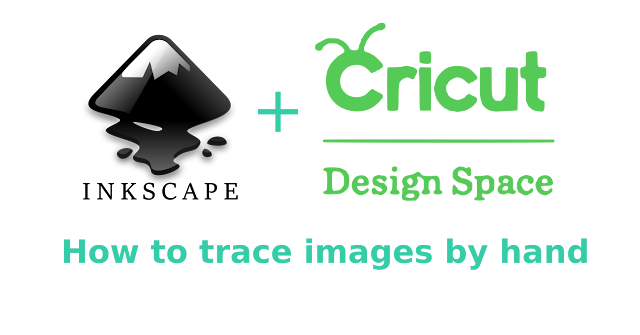Tracing Images in Inkscape
This tutorial will walk you through hand tracing images in Inkscape. Inkscape has a built in "Trace Bitmap" feature, but when you are working with an image that has a lot of layers, especially if some of the colors are very similar, the results you get from using this feature may not be as clean as you need it to be to cut with your Cricut.
I have created a companion video for this article that you can follow along with. This is my very first video and I would love to hear any feedback you might have for me!
Check out the video & Subscribe to my channel!
Find an image to trace
For this tutorial, I will be working with the floral image below. If you can save to your computer if you would like to follow along. Please be respectful of the work of others and make sure that you have the right to use the image you want to trace.
Import your image
Opening Inkscape and Importing the image you want to trace by selecting Import from the File tab
Turn off your gridlines
If you have gridlines enabled, it's best to turn them off for this technique. You don't want your pointer to snap to the grid. To do this, click the document properties button. Go to the Grids Tab and uncheck the Enabled checkbox under the Rectangular grid Section.
Place nodes at corners
Using the Bezier line tool, place nodes at all of the sharp corners all the way around your image until you have a continuous loop. If your image has parts that are separated by white space you will have more than one "loop"
When you are done, you will have a continuous line that connects all of the corners of your image. (It wont look very good at this point!)
Smooth out your curves
Using your node editing tool, smooth out all of the lines to match the curves around your image. You can pull on the line itself, or adjust the grips that come from the nodes. If your lines are behaving strangely select all of your nodes and make sure they are set to "corner".
Slice off chunks of your image
Draw a rectangle around a part of your image that you would like to make a different color. Change the rectangle to a path by selecting Object to Path from the path tab. Add nodes to the rectangle by double clicking along the line. Move the nodes to the "corners" of the part you want to slice off. (Watching the video will probably be helpful for this step) When you have the rectangle where you want it, select the rectangle and the image you want to slice; then, from the path tab, select Division. This will slice the chunk off and you will be left with two separate pieces that match up like a puzzle.
Repeat!
Repeat the "slicing" technique until you have sliced your image up into all of the chunks you want!
Turn off "Strokes" and turn on "Fills"
Open the Fill and Stroke Window (Shift+Crtl+F) and turn on the "Fill" for all of your paths. Change the color of your fills to the desired color. Also turn off all of the "Strokes" (don't turn off your strokes before you add a fill! You might lose your paths because you wont be able to see them). At this point you will also want to use the "union" tool from path tab to combine any parts that you want to come in as a single layer. (I needed to do this with the flower petals on this image)
Delete the original image and save your work!
That's it! You should be able to import your masterpiece into design space and cut it out. Good work & thanks for stopping by!














Comments
Post a Comment